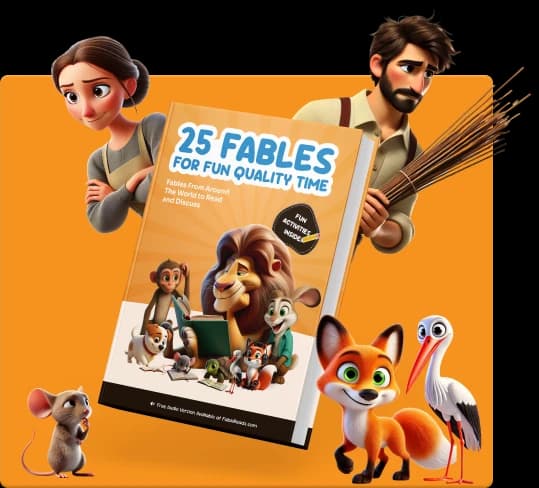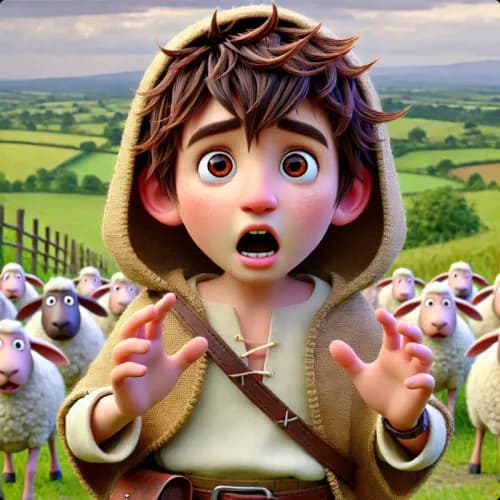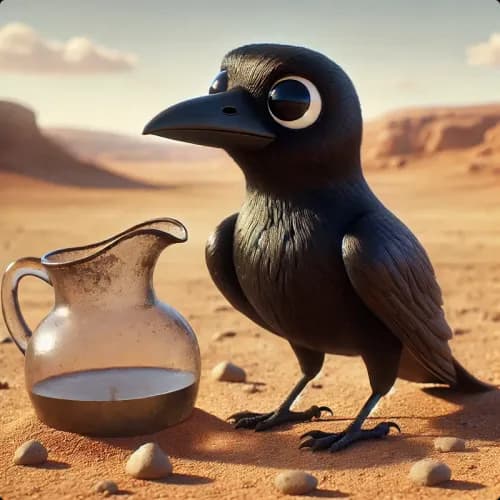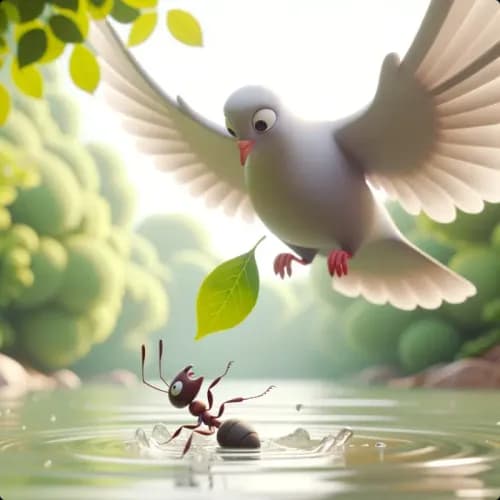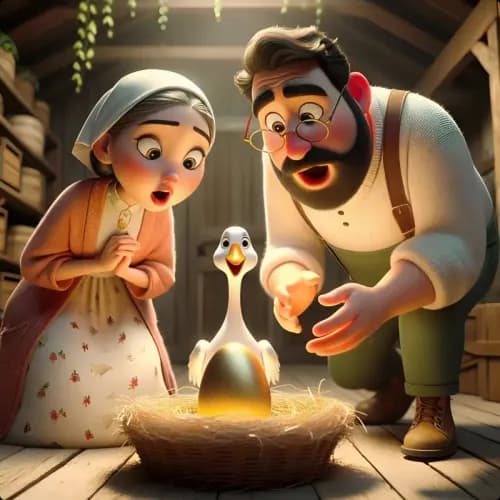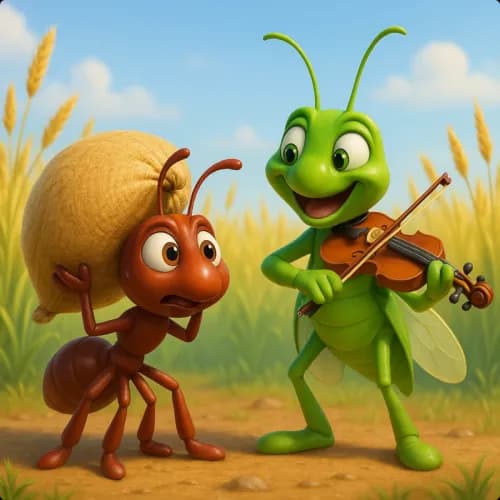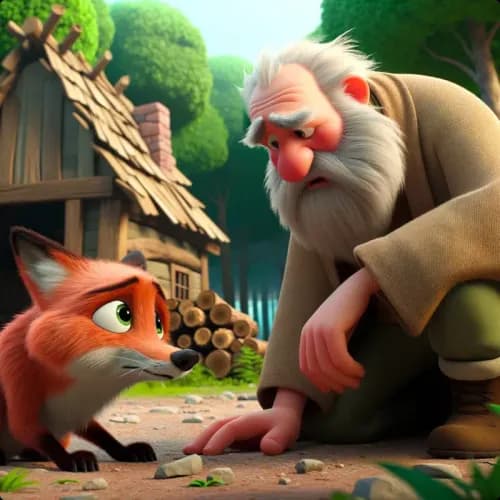Aesop | Greece
El Raton De Ciudad Y El Raton De Campo
El Ratón de Ciudad visita al Ratón de Campo, quien descubre el peligro en la ciudad y prefiere su vida tranquila.
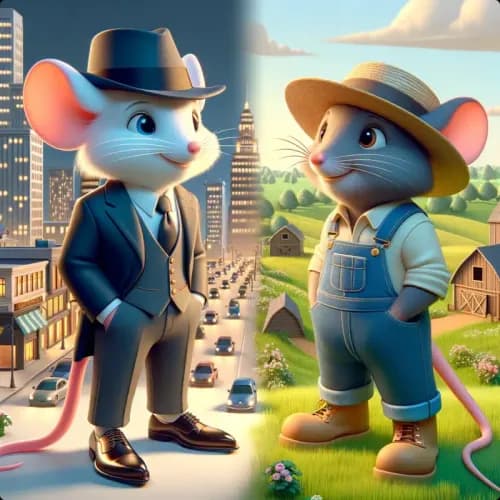
Érase una vez, en una ciudad grande y ruidosa, vivía un Ratón de Ciudad. Tenía un amigo que era muy diferente a él, un Ratón de Campo, que vivía en el tranquilo y pacífico campo. Aunque sus hogares eran muy distintos, eran muy buenos amigos.
Un día, el Ratón de Ciudad decidió visitar a su amigo en el campo. ¡El Ratón de Campo estaba muy feliz de verlo! Quería que se sintiera bienvenido, así que preparó una comida sencilla con cosas como raíces, granos y bayas.
Mientras comían, el Ratón de Ciudad hablaba de su vida en la ciudad. Decía que en la ciudad había mucha comida y muchas cosas elegantes. Al Ratón de Campo le dio mucha curiosidad sobre la vida en la ciudad y decidió verla por sí mismo.
Cuando el Ratón de Campo visitó la ciudad, el Ratón de Ciudad lo llevó a una gran casa. Allí, encontraron mucha comida deliciosa como quesos, frutas y pasteles. ¡El Ratón de Campo no podía creer lo que veían sus ojos; todo era tan elegante y delicioso!
Pero justo cuando estaban disfrutando de la comida, oyeron unos ruidos fuertes. Eran las personas que vivían en la casa y su gran y aterrador gato. Los dos ratones tuvieron que correr rápido y esconderse. Pasaron toda la noche escondiéndose y huyendo del peligro. Fue muy aterrador para el Ratón de Campo.
Después de esa noche, el Ratón de Campo se dio cuenta de algo importante. Extrañaba su vida sencilla y tranquila en el campo. Para él, sentirse seguro y en paz era mucho mejor que toda la comida elegante de la ciudad. Así que decidió regresar a casa, sabiendo que la vida simple era la mejor vida para él.
Compra un Libro y Ayuda a Llevar Fábulas al Mundo
Disfruta de 25 fábulas seleccionadas de por vida, impresas. Cada compra apoya historias gratuitas para niños, padres y maestros en todo el mundo en fablereads.com
